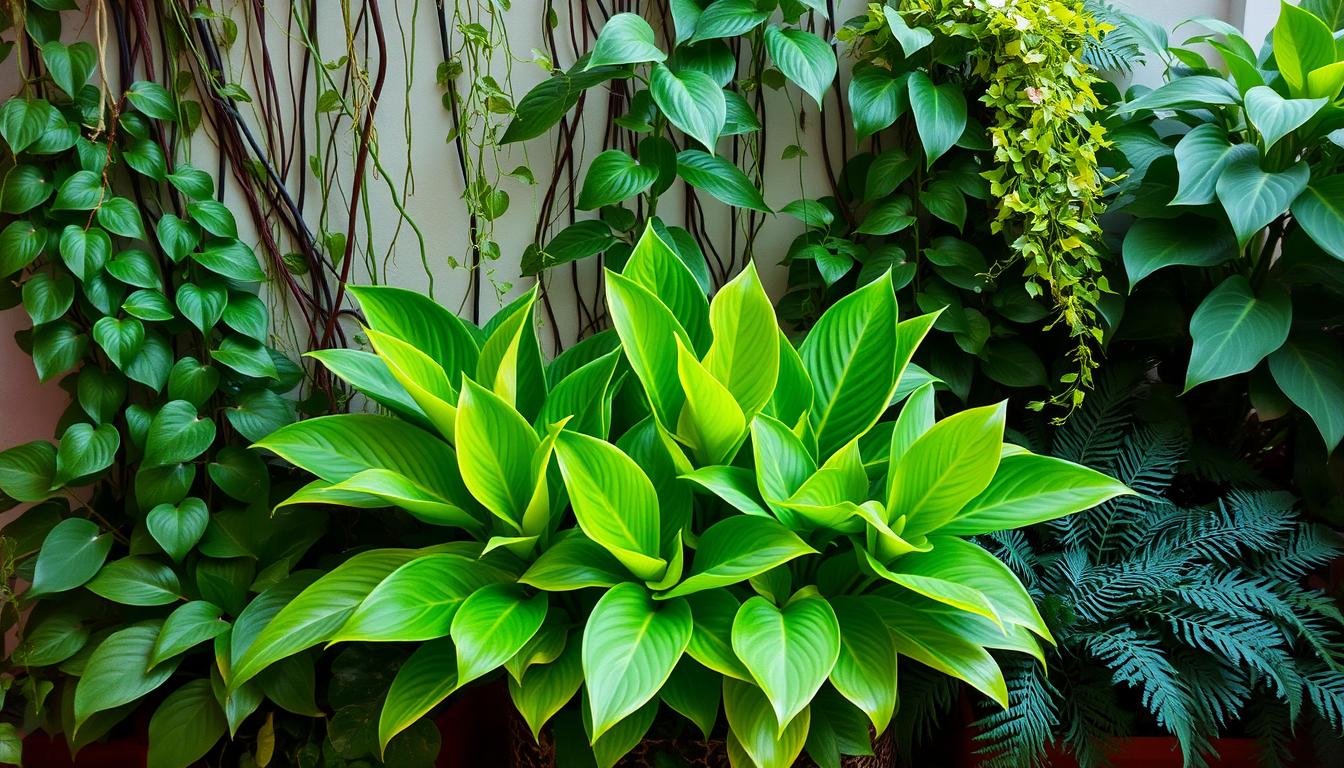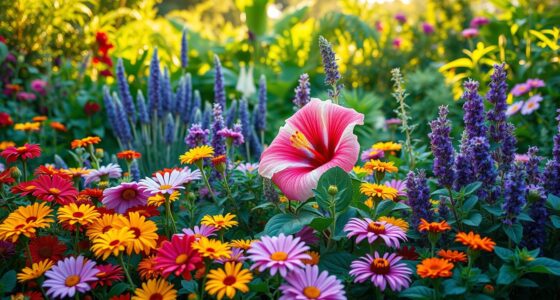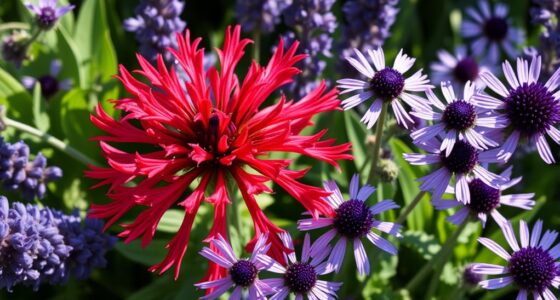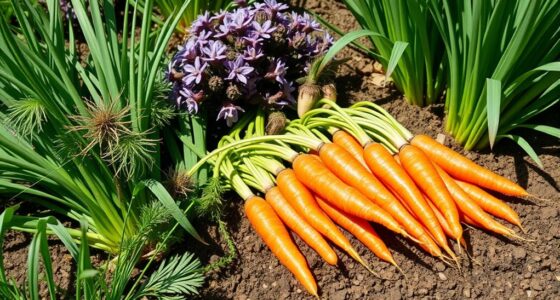Imagine walking into a room filled with vibrant green plants, their leaves whispering tales of growth and resilience. Among them, the prayer plant stands out, captivating you with its unique ability to fold its leaves at night, as if in a gentle prayer. This enchanting plant not only brings beauty to your space but also thrives best when paired with the right companions. In this exploration of ideal prayer plant companion plants, you’ll discover how to create a harmonious indoor garden that nurtures both your prayer plant and its friends. Delve into the world of the best companion plants for prayer plant, and let your green thumb flourish.
Key Takeaways
- Prayer plants thrive in moisture and warmth, making humidity a key factor for success.
- Choosing companion plants can enhance both the beauty and health of your indoor garden.
- Understand the light preferences of each plant for a thriving green environment.
- Well-draining soil is essential for maintaining healthy roots and preventing overwatering.
- Regular pruning and maintenance help keep your prayer plants and companions flourishing.
Introduction to Prayer Plants
Prayer plants, belonging to the Marantaceae family, are captivating additions to any indoor garden. The most recognized of these is Maranta leuconeura, known for its stunning foliage and striking aesthetics. These plants thrive in tropical regions of South America, drawing attention for their unique ability to fold leaves upward at night, mimicking a prayer position. Their distinctive characteristics make them a favorite among plant enthusiasts.
What are Prayer Plants?
Prayer plants are renowned for their lush, patterned leaves that come in various shades of green and red. They are often recognized for their vibrant markings and striking curvature. The common name “prayer plant” arises from their nightly leaf movements, which create an elegant display. Understanding what sets them apart is crucial for any plant lover looking to cultivate this thrilling variety indoors.
Unique Features of Prayer Plants
The unique features of prayer plants extend beyond their enchanting leaf fold. Maranta leuconeura exemplifies adaptability, flourishing in bright, indirect light while enjoying high humidity conditions. This plant not only enhances your space visually, but its fascinating behavior also offers insight into its natural habitat. By investing time and care into a prayer plant, you can enjoy its vibrant beauty and ensure it thrives for years to come.

Understanding Companion Planting
Companion planting is a gardening technique that emphasizes the beneficial relationships between different plant species. By pairing plants that thrive together, you can enhance growth, deter pests, and create a more visually appealing garden. The benefits of companion planting extend beyond mere aesthetics, promoting a healthy ecosystem where plants support each other’s growth and development.
Benefits of Companion Planting
Utilizing companion planting in your garden offers numerous advantages. Not only can it increase the overall yield, but it also helps in creating a natural pest control system. Certain plants emit scents that repel insects, while others attract beneficial pollinators. Furthermore, companion planting can improve nutrient availability in the soil. Plants such as legumes fix nitrogen, enriching the soil for their companions. This harmonious living arrangement leads to healthier, more vibrant gardens.
How it Works
Companion planting operates on several principles, making it an effective strategy for achieving a flourishing garden. One fundamental concept involves understanding the specific care requirements of each plant, including light, water, and humidity needs. When choosing companions, consider plants that thrive under similar conditions. For example, a moisture-loving plant can benefit from being near another that has a shallower root system, as it can help preserve soil moisture.
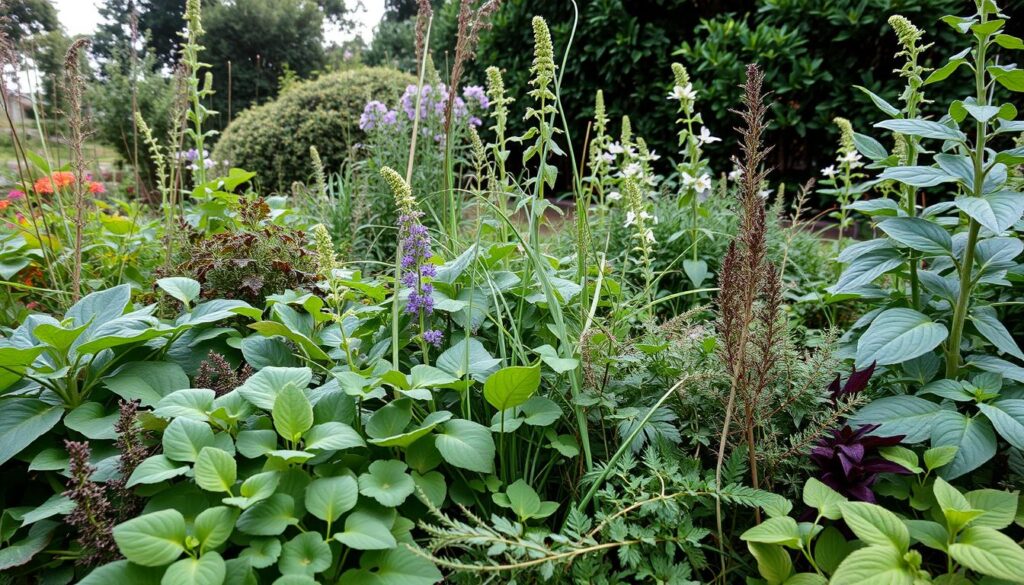
By developing a solid knowledge of each plant’s attributes, you can create combinations that maximize the advantages of companion planting. As you apply these gardening techniques, you’ll foster an environment that enhances biodiversity and creates a thriving garden atmosphere.
Best Companion Plants for Prayer Plants
When you think about the best companion plants for prayer plants, several options immediately stand out. These plants not only complement your prayer plant but also thrive in similar environmental conditions, creating a harmonious indoor garden. Consider Calathea varieties, Pothos, and ferns as ideal choices when pairing prayer plant with other plants.
Calathea Varieties
Calathea brings a wealth of vibrant colors and patterns to your collection. Known for their striking foliage, these plants thrive in the same humidity levels as your prayer plant and friends. Whether you choose Calathea zebrina or Calathea lancifolia, their unique leaves add beauty to your space while enhancing the overall aesthetic.
Pothos and Its Benefits
Pothos serves as an excellent companion due to its adaptability and lush vines. This versatile plant matches the humidity requirements of prayer plants, making it a great option for indoor setups. Pothos also helps to purify the air, ensuring a fresher environment in your home while offering a cascading look that harmonizes perfectly with your prayer plant.
Ferns: A Soft Touch
Ferns offer a soft, delicate appearance that complements the bold shapes of prayer plants. Their feathery fronds enhance the lushness of your indoor garden while helping to maintain humidity levels. Consider varieties like Boston ferns or maidenhair ferns for a refreshing touch that pairs beautifully with your prayer plant and friends.
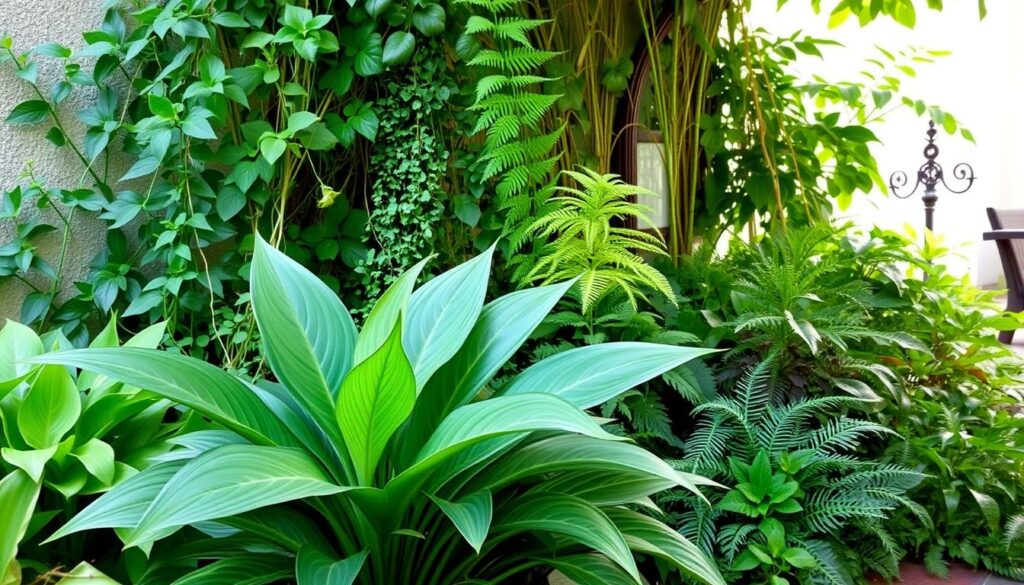
| Plant Type | Humidity Level | Light Requirements | Benefits |
|---|---|---|---|
| Calathea | High | Indirect sunlight | Colorful foliage, low maintenance |
| Pothos | Moderate to High | Low to bright, indirect light | Air purification, cascading vines |
| Ferns | High | Indirect sunlight | Lush appearance, humidity maintenance |
Compatibility with Light Conditions
Understanding the lighting conditions for prayer plants is essential for creating a thriving indoor garden. These delightful plants flourish in bright, indirect light but can tolerate low-light situations, making them suitable for various spaces. Choosing companion plants that share similar light preferences enhances their mutual growth and creates a harmonious arrangement.
Low-Light Tolerance
Prayer plants fall into the category of low-light plants. They can adapt to areas of your home that don’t receive direct sunlight. This quality is beneficial if you have a cozy corner or a room with limited illumination. Keeping prayer plants in low-light environments helps maintain their vibrant foliage without causing stress or fading.
Bright, Indirect Light Preferences
On the other hand, prayer plants exhibit a strong preference for bright indirect light plants. This lighting condition promotes optimal growth and vibrant leaf colors. Therefore, consider placing your prayer plants near East or West-facing windows where they can bask in gentle sunlight while being shielded from harsh rays. Ensuring the right light conditions is crucial for the health of your plants, allowing them to thrive alongside their companions.
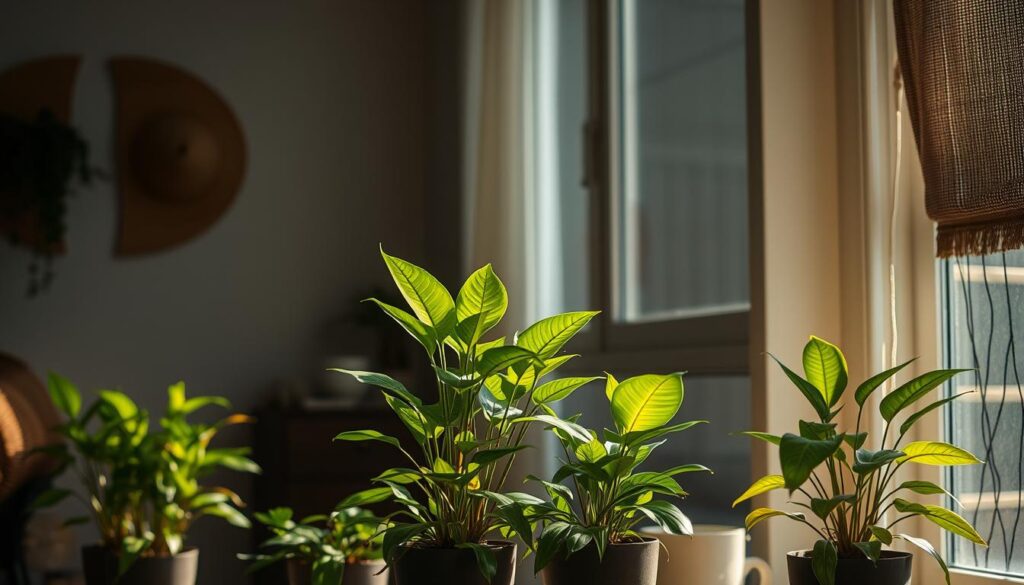
| Plant Type | Light Preference | Notes |
|---|---|---|
| Prayer Plant | Bright, Indirect Light / Low Light | Adapts well to various lighting conditions. |
| Pothos | Low Light to Bright, Indirect Light | Very forgiving and easy to grow in different light. |
| Calathea | Bright, Indirect Light | Prefers consistent humidity and moderate light. |
Soil Requirements for Companion Plants
Understanding the soil requirements for prayer plants and their companions is essential for fostering a healthy environment. Well-draining soil is a top priority to prevent issues such as waterlogging or root rot. By creating an ideal soil mix for indoor plants, you can ensure their thriving growth and vitality.
Importance of Well-Draining Soil
Well-draining soil allows excess water to escape while retaining just enough moisture for healthy root systems. Inadequate drainage can lead to diseases that affect both prayer plants and their companions. Proper soil conditions play a vital role in maintaining a balanced moisture level, which is crucial for the overall health of your plants.
Recommended Soil Mixes
The ideal soil mix for indoor plants typically combines potting soil, peat moss, and perlite. This combination provides the necessary aeration, ensuring roots receive sufficient oxygen while preventing water retention issues. A suggested ratio might be:
| Component | Percentage |
|---|---|
| Potting Soil | 50% |
| Peat Moss | 30% |
| Perlite | 20% |
Regularly assess the soil conditions and make adjustments as needed. Ensuring the right soil mix will strengthen the bond between your prayer plant and its companions, leading to vibrant and lush greenery in your home.
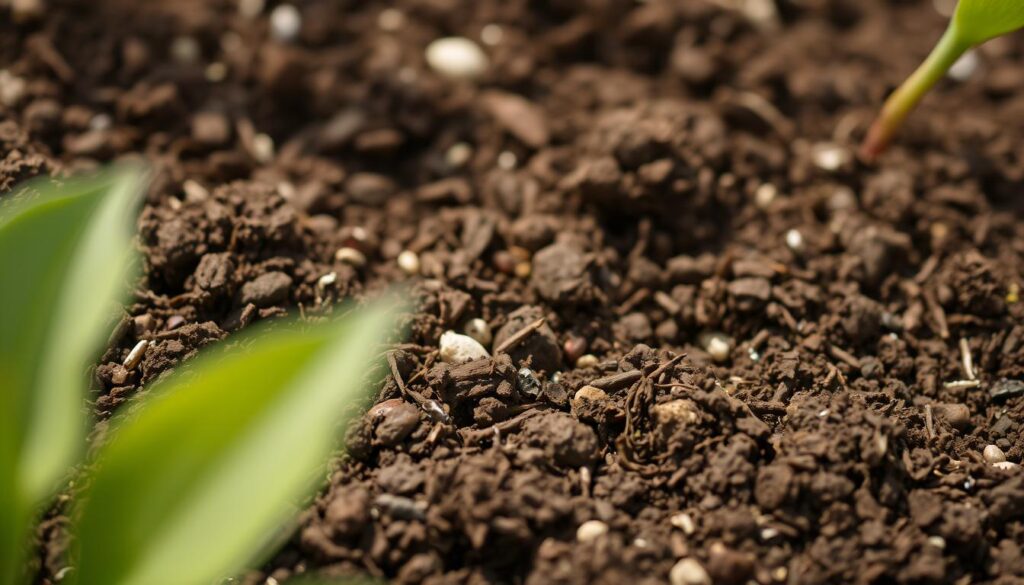
Watering Needs of Prayer Plants and Companions
When it comes to keeping your prayer plants and their companions thriving, understanding their watering needs plays a vital role. Both types of plants flourish with consistent moisture, and knowing the right approach can make all the difference in their health.
Ideal Watering Schedule
The ideal watering schedule for indoor plants such as prayer plants often varies with the seasons and the specific needs of each plant. During their active growth periods in spring and summer, you may need to water more frequently. It’s advisable to check the moisture level of the soil by sticking your finger about an inch deep. If it feels dry, it’s time to water. Yet, be cautious with the amount; ensuring the topsoil dries out slightly between waterings promotes strong root development.
Signs of Overwatering
Recognizing the signs of overwatering is crucial for maintaining a healthy environment for your plants. Common indicators include yellowing leaves, wilting, and an unpleasant odor from the soil. To avoid these issues, always ensure that pots have proper drainage and consider the plant’s specific needs. Adjusting your watering prayer plants and their companions can lead to vibrant growth and a flourishing indoor garden.

Humidity Levels and Companion Plants
Providing the right humidity levels is crucial for the health of your prayer plants and their companion plants. These humidity-loving plants flourish in environments with moisture levels ranging between 50% and 60%. Understanding the humidity requirements for prayer plants enables you to create conditions that support their growth and vibrancy.
Why Humidity Matters
Indoor plant humidity plays a significant role in plant health. Prayer plants and their companions can suffer from stress and poor growth if the humidity is too low. The right humidity not only helps maintain leaf texture and color but also enhances overall vitality. Maintaining an ideal moisture level encourages proper nutrient absorption and bolsters resistance to pests and diseases.
Best Humidity Levels for Growth
To provide optimal care, consider using humidity trays or regularly misting your plants. These practices help raise indoor plant humidity effectively. Here’s a quick comparison of the humidity needs of various humidity-loving plants:
| Plant Type | Ideal Humidity Level | Additional Care Tips |
|---|---|---|
| Prayer Plant | 50% – 60% | Mist regularly for added moisture |
| Calathea | 60% – 70% | Use a pebble tray to enhance moisture |
| Pothos | 40% – 60% | Adaptable but thrives with higher humidity |
| Ferns | 50% – 70% | Avoid drafts to maintain humidity |
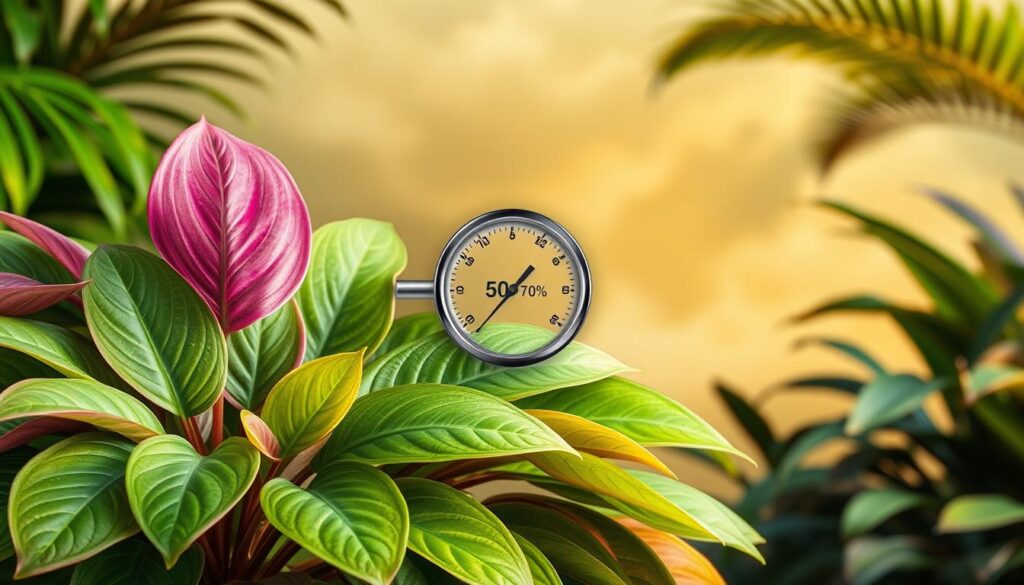
Seasonal Considerations for Companion Planting
Understanding the seasonal needs of your prayer plants and their companions enhances the gardening experience. Seasonal plant care varies significantly from spring and summer to fall and winter. Adapting your watering and fertilization routines according to these seasons ensures that your plants thrive.
Spring and Summer Partnership
During the vibrant months of spring and summer, your plants are in their active growth phase. It’s important to increase watering frequency, allowing the soil to remain consistently moist without becoming soggy. Fertilization becomes essential in this period, as you can utilize balanced fertilizers to support rapid growth. Following spring/summer plant growing tips helps maintain your plants’ health and vigor, promoting lush foliage and vibrant colors.
Fall and Winter Care Tips
As the seasons shift to fall and winter, the growth rate of your prayer plants slows down. This change calls for reduced watering, as the plants require less moisture during the dormant phase. Keep an eye on humidity levels, prioritizing seasonal considerations for indoor gardening. Adjust your fertilization schedule by scaling back, allowing your plants to rest while still ensuring they have sufficient nutrients for resilience through the colder months.
| Season | Watering Frequency | Fertilization | Growth Rate |
|---|---|---|---|
| Spring/Summer | Every few days | Regular (every 2-4 weeks) | Active |
| Fall/Winter | Every 1-2 weeks | Minimal (once a month) | Slowed |
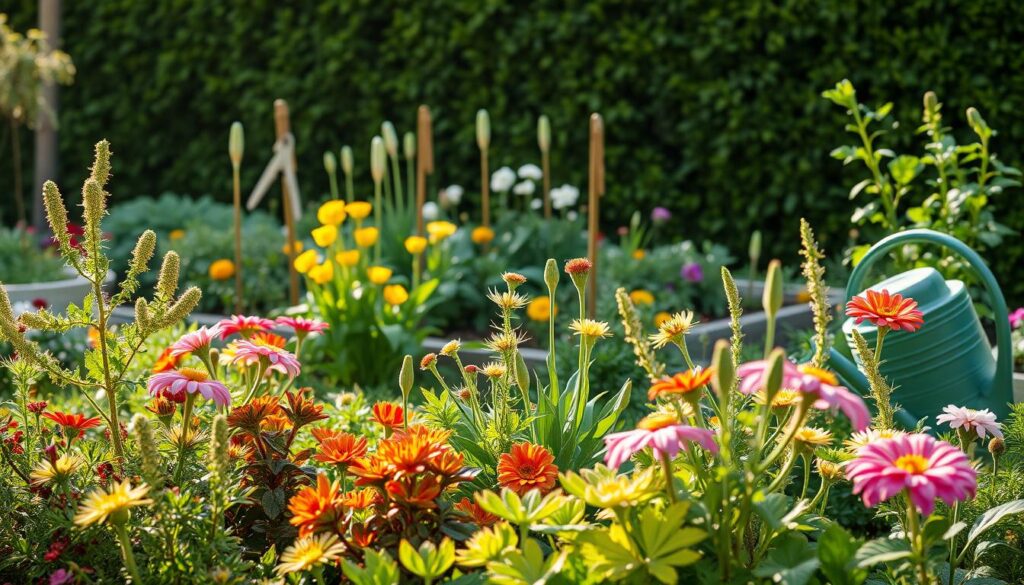
Common Pests and Diseases
Maintaining the health of your prayer plants requires vigilance against common pests of prayer plants. Early identification of issues such as spider mites or aphids can save you from larger problems later on. Observing your plants regularly, paying attention to unusual signs, ensures timely intervention.
Identifying Problems Early
Look for telltale signs of pest infestations. You might notice:
- Sticky residue on leaves, indicating aphid presence.
- Silken webs that signal spider mites.
- Discoloration or yellowing of leaves, often a symptom of nutrient loss due to pests.
Establishing a routine check can help you address these symptoms swiftly, keeping your plants thriving.
Natural Pest Control Options
To combat infestations, you can explore a range of natural pest control for indoor plants. Here are a few effective strategies:
- Introduce beneficial insects such as ladybugs that naturally prey on harmful pests.
- Utilize neem oil, a powerful and organic pesticide that acts against various pests.
- Employ insecticidal soaps that are gentle on your plants yet effective against pests.
Implementing these pest management strategies ensures a safe environment for both your prayer plants and your home. A proactive approach will not only protect your plants but also promote their well-being.
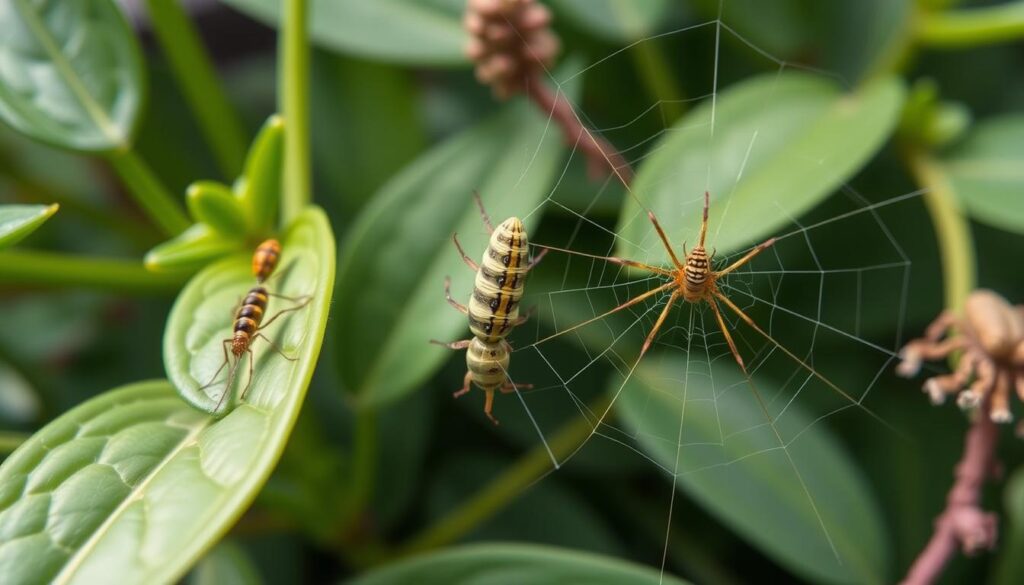
Fertilization Tips for Healthy Growth
To keep your prayer plants and their companions thriving, proper fertilization is essential. Understanding the right frequency and types of fertilizers can significantly enhance growth and vitality. This section provides key insights on how often to fertilize and the best types of fertilizers available.
How Often to Fertilize
For an effective fertilization schedule, focus on applying fertilizer every four to six weeks during the growing seasons of spring and summer. During the fall and winter months, reduce your fertilization for prayer plants, as their growth typically slows down. Adhering to these indoor plant fertilization tips will help maintain an optimal nutrient balance for your plants.
Best Types of Fertilizers
Choosing the right fertilizer plays a crucial role in successful indoor gardening. Liquid fertilizers that are balanced and low in salt content are excellent choices for prayer plants. Organic options, such as worm castings and fish emulsion, provide the necessary nutrients without the risks associated with synthetic products. These fertilizers not only promote healthy foliage but also contribute to a robust root system, making them some of the best fertilizers for indoor gardening.
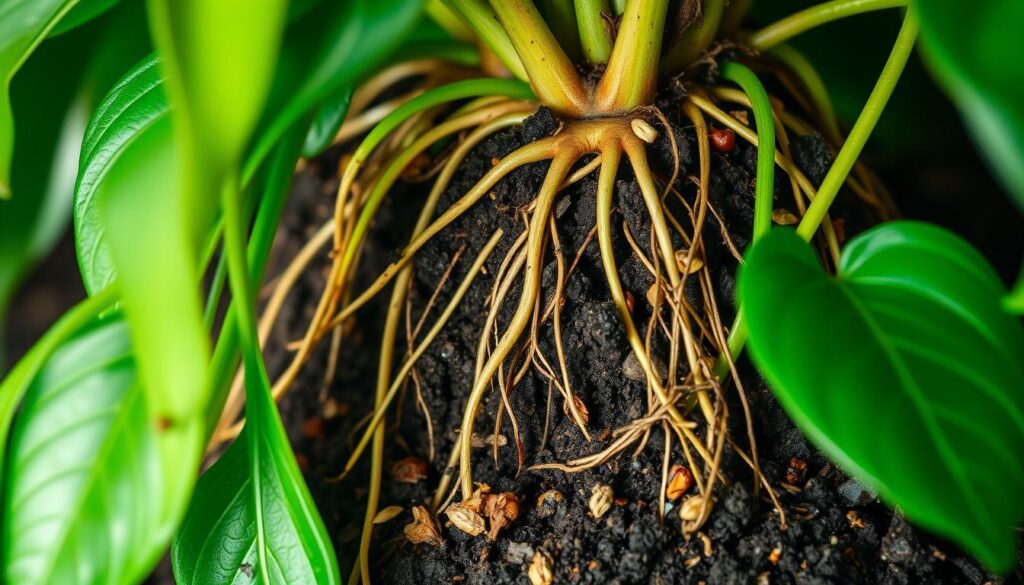
Pruning and Maintenance Strategies
Keeping your prayer plants and their companions healthy requires attention to their growth patterns and overall well-being. Regular pruning plays a vital role in this maintenance for indoor plants. Careful upkeep promotes airflow, reduces disease risks, and enhances the aesthetic quality of your indoor garden. Below are two essential aspects to consider: how to keep companion plants in check and the best practices for pruning them effectively.
Keeping Companion Plants in Check
Pruning prayer plants involves trimming back any dead or yellowing leaves, along with managing leggy growth to enhance bushiness. Ensure you regularly check your companion plants for signs of overcrowding or poor health. Keeping these plants appropriately sized promotes a healthy indoor environment.
When and How to Prune
The best time to prune is during the growing season, typically in spring or summer. Use clean, sharp tools to make quick cuts, which helps to minimize stress on the plants. Focus on early detection of issues like pests or diseases. This practice aligns with effective plant care strategies, ensuring that all associated plants thrive harmoniously.
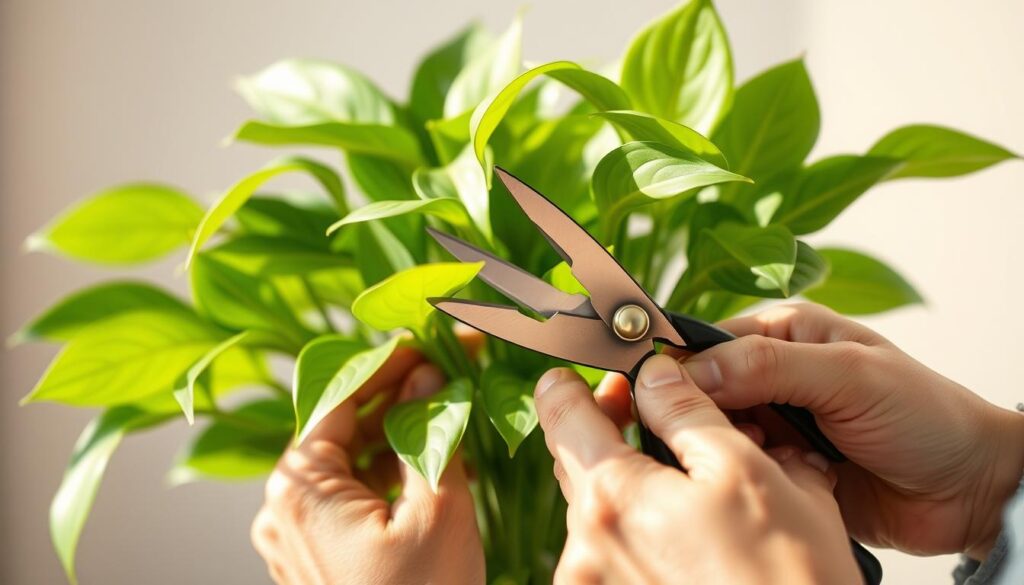
| Pruning Task | Frequency | Tools Required | Tips |
|---|---|---|---|
| Remove dead leaves | Weekly | Sharp scissors | Avoid damaging healthy leaves |
| Trim leggy growth | Monthly | Pruning shears | Make cuts above a node |
| Monitor for pests | Every two weeks | Magnifying glass | Check both top and bottom of leaves |
| General maintenance | Seasonal | Gardening gloves | Clean tools before use |
By integrating these pruning and maintenance strategies into your routine, you can ensure that your indoor plants, including both prayer plants and their companions, remain vibrant and healthy.
Integrating Companion Plants into Your Home
Bringing companion plants into your home offers a fantastic opportunity to enhance your interior aesthetics while embracing the beauty of nature. Thoughtful arrangements can transform any space, making it more inviting and vibrant. With a few practical plant styling tips, you can create an engaging environment that showcases your lush indoor garden ideas.
Stylish Arrangements
Consider various arrangements to maximize the visual impact of your plants. Tiered displays allow for a creative layering effect that draws the eye upward, while mixed plant groupings add depth and interest. Utilizing hangers and shelves not only helps to save floor space but can also create a stunning vertical garden. This approach ensures that your home interior plant design remains stylish while catering to each plant’s specific growth requirements.
Creating a Lush Atmosphere
To cultivate a truly lush atmosphere, focus on incorporating a variety of plant types and sizes. This diversity not only enhances visual appeal but also supports a thriving ecosystem. Position plants in areas with adequate lighting and humidity to contribute to their overall health. By combining creativity with proper care, you can enjoy a vibrant indoor garden that elevates your home’s ambiance.
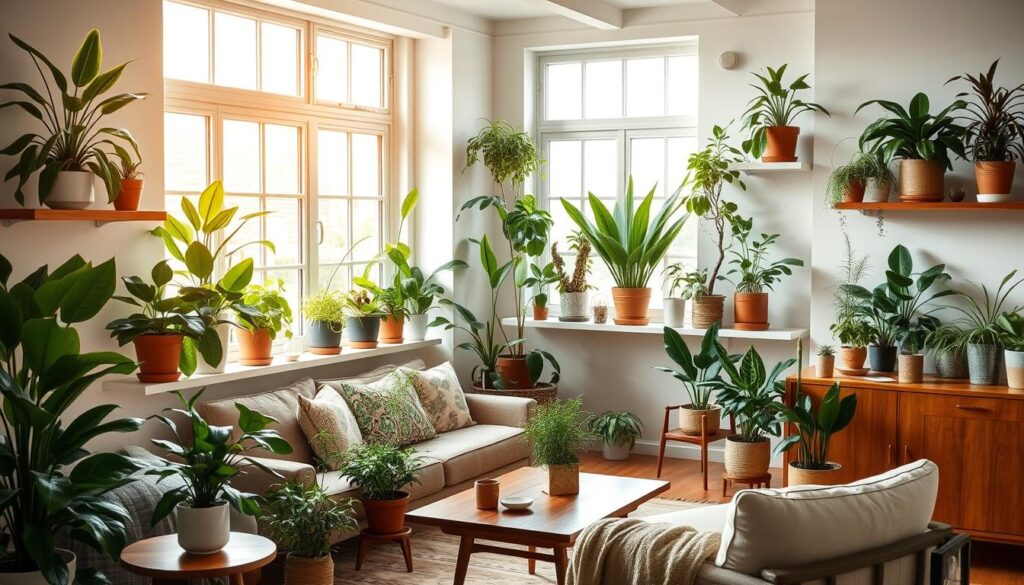
Conclusion: Enhancing Your Prayer Plant Experience
Choosing the right companion plants for your prayer plants can truly elevate your indoor gardening journey. By taking a moment for reflection on your plant choices, you can create an optimal environment that encourages health and growth. Think about the compatibility of light, soil, and humidity, ensuring that each plant supports the others in your collection.
To delve deeper into enhancing indoor gardening, consider tapping into additional gardening resources. Online articles, webinars, and local gardening clubs can provide valuable insights and tips tailored to your specific needs. Engaging with a community of fellow plant enthusiasts can not only expand your knowledge but also create a supportive network to share your gardening experiences.
Ultimately, your efforts in thoughtfully selecting companion plants will not only beautify your space but also nurture a thriving indoor ecosystem. Embrace the joy of gardening with confidence, knowing that each decision contributes to a more vibrant and harmonious home.
